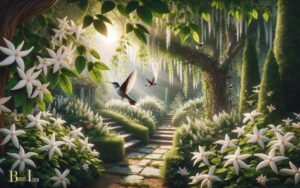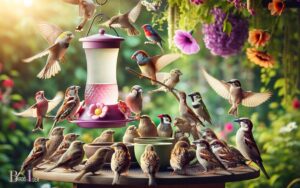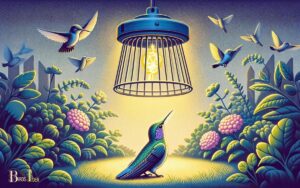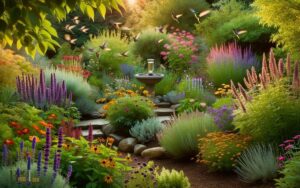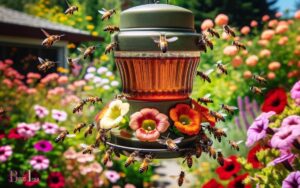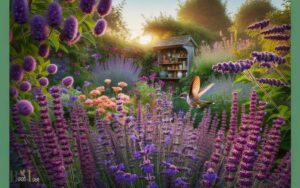Potted Plants That Attract Hummingbirds: Fuchsia, Bee Balm!
To attract hummingbirds to your garden or balcony, consider potted plants such as Fuchsia, Bee Balm, Petunias, and Salvia. These plants offer vibrant blooms and nectar that hummingbirds love.
Hummingbirds are attracted to areas that provide them with food, shelter, and nesting sites. Potted plants can be a great way to entice these birds, especially if you have limited space.
Certain characteristics make some plants more appealing to hummingbirds:
Here are some potted plants that hummingbirds find irresistible:
Planting a combination of these will not only add beauty to your surroundings but also provide a welcoming environment for hummingbirds.
Welcome hummingbirds to your outdoor space with the right potted plants, creating a lively and colorful environment for these enchanting birds.
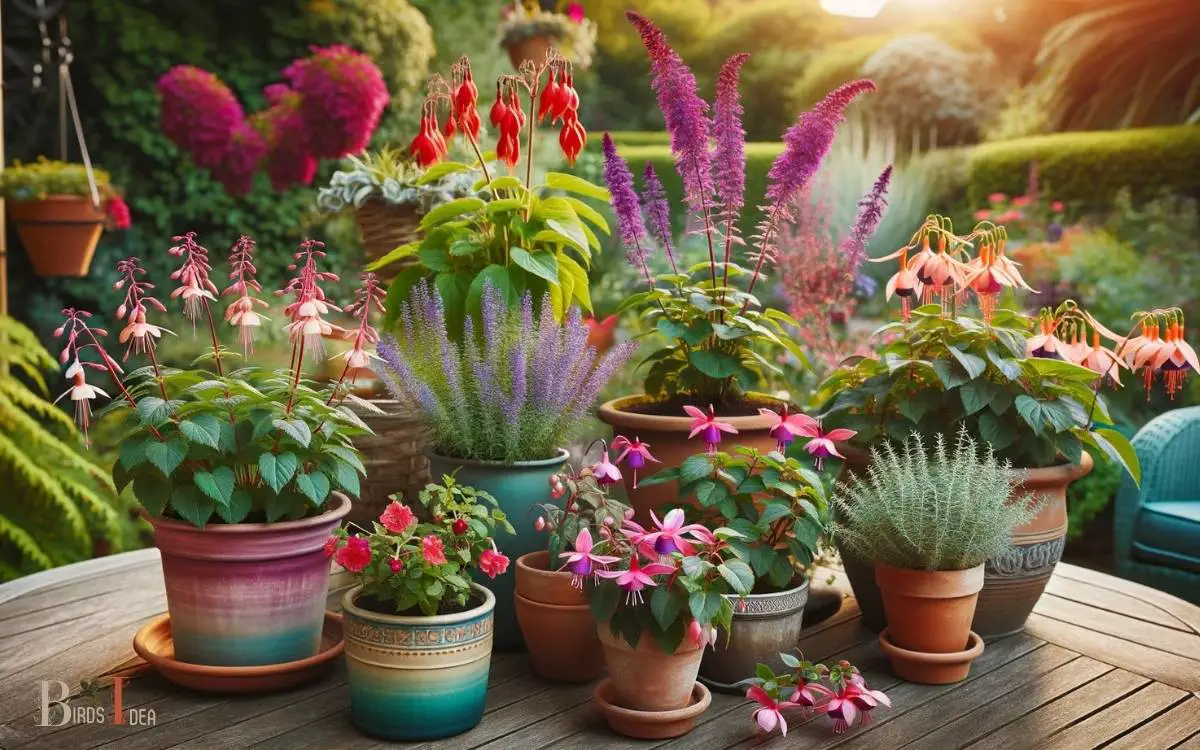
Key Takeaway
Choosing the Right Pots
When selecting potted plants to attract hummingbirds, it’s important to choose pots with adequate drainage and suitable size.
Hummingbirds are attracted to a variety of flowers, and having the right pots can make a significant difference in their ability to thrive. Pots with drainage holes prevent waterlogging, which is crucial for the health of the plants.
Additionally, choosing pots of suitable size is important to ensure that the plants have ample space for root growth and stability. It’s recommended to opt for larger pots to accommodate the deep roots of hummingbird-attracting plants.
By selecting pots with proper drainage and size, individuals can create an inviting environment for hummingbirds while promoting the healthy growth of their potted plants.
Selecting the Ideal Plant Varieties
To ensure the successful attraction of hummingbirds, selecting the ideal plant varieties is essential for complementing the chosen pots with suitable flowers that the hummingbirds are drawn to.
When choosing plant varieties, it’s important to consider the nectar content, bloom shape, and color.
Here are some plant varieties that are known to attract hummingbirds:
| Plant Variety | Nectar Content | Bloom Shape | Bloom Color |
|---|---|---|---|
| Trumpet Vine | High | Tubular | Orange |
| Bee Balm | High | Spiky | Red, Pink |
| Salvia | Medium | Tubular | Red, Purple |
| Fuchsia | High | Bell-shaped | Pink, Purple |
| Cardinal Flower | High | Spiky | Red |
Placement and Sunlight Requirements
While considering the placement and sunlight requirements for potted plants that attract hummingbirds, it’s important to prioritize the availability of direct or partial sunlight.
Ideally, these plants should be placed in areas where they can receive at least six hours of sunlight per day.
When selecting a location for these potted plants, it’s important to consider the specific sunlight requirements of each plant variety.
For instance, trumpet vine and bee balm thrive in full sunlight, while fuchsia and impatiens prefer partial shade. It’s crucial to monitor the sunlight patterns in the chosen location throughout the day to ensure that the plants receive the necessary amount of sunlight.
By understanding the sunlight requirements of each plant variety, individuals can create an optimal environment to attract and nourish hummingbirds.
Watering and Feeding Tips
The potted plants that attract hummingbirds need to be regularly watered and fed with a balanced fertilizer to support their growth and ability to attract hummingbirds. When it comes to watering, it’s important to keep the soil consistently moist but not waterlogged.
Hummingbird-attracting plants generally prefer well-draining soil, so it’s crucial to avoid overwatering. A good rule of thumb is to water when the top inch of soil feels dry to the touch.
Additionally, feeding these plants with a balanced fertilizer can help promote healthy growth and vibrant blooms, which are essential for attracting hummingbirds.
A water-soluble fertilizer with a balanced formula, such as 10-10-10, can be applied every 2-4 weeks during the growing season. It’s important to follow the instructions on the fertilizer packaging to avoid overfeeding.
Creating a Hummingbird-Friendly Environment
How can potted plants be arranged to create a hummingbird-friendly environment?
To attract hummingbirds to your potted plants, consider the following tips:
- Placement: Position the potted plants in an area with some protection from wind and direct sunlight, as this can help create a more inviting environment for hummingbirds.
- Variety of Flowers: Incorporate a variety of nectar-rich flowers in different colors and shapes to attract a diverse range of hummingbird species.
- Perches: Place small perches near the potted plants to provide resting spots for hummingbirds, as they often need to conserve energy between feeding sessions.
- Water Source: Include a small water feature, such as a shallow bird bath or a water fountain, to provide hummingbirds with a source of clean water for drinking and bathing.
Conclusion
So, if you want to attract hummingbirds to your garden, just remember to pick the biggest, ugliest pots you can find and fill them with the most boring, unattractive plants you can think of. Place them in the darkest, shadiest corner of your yard and water them sparingly.
Congratulations, you’ve created the perfect hummingbird haven! Just kidding, follow the article’s advice and you’ll have those delightful little birds flocking to your garden in no time.

